Endorphin.es Milky Way Handleiding
Endorphin.es
Niet gecategoriseerd
Milky Way
Bekijk gratis de handleiding van Endorphin.es Milky Way (2 pagina’s), behorend tot de categorie Niet gecategoriseerd. Deze gids werd als nuttig beoordeeld door 69 mensen en kreeg gemiddeld 4.9 sterren uit 35 reviews. Heb je een vraag over Endorphin.es Milky Way of wil je andere gebruikers van dit product iets vragen? Stel een vraag
Pagina 1/2

WARRANTY
RTFM – be so kind and read the manual. It will provide you with the
information you need to fully indulge the module you just
purchased – for which we like to thank you.
Enjoy your sound experiences, dear sonic traveller.
Beginning from the product's purchase date a 1-year warranty is
guaranteed for each product
in case of any manufacturing errors or other functional
deficiencies during runtime.
The warranty does not apply in case of:
• damage caused by misuse
• mechanical damage arising from careless treatment
(dropping, vigorous shaking, mishandling, etc.)
• damage caused by liquids or powders penetrating the device
• heat damage caused by overexposure to sunlight or heating
• electric damage caused by improper connecting
The warranty covers replacement or repair, as decided by us.
Please contact us via email for a return authorization before
sending anything. Shipping costs of sending a module back for
servicing is paid by the customer.
Device complies with all EU regulations concerning RoHS lead-free
manufacturing and WEEE disposal
Endorphin.es are made in Barcelona, Spain
Visit us:
http://endorphin.es
https://youtube.com/user/TheEndorphines
https://facebook.com/TheEndorphines
https://www.instagram.com/endorphin.es/
Drop us a line:
info@endorphin.es
FURTH BARCELONA, S.L.
VAT ID:ES B66836487
audio in
in 1
Power OFF you modular system:
Hold ‘mode’ while powering your system again:
You will see status LED
will blink blue:
WAV
Connect the audio output from your computer
headphones output to one of the audio inputs
of the module with simple mono or stereo cable.
Press PLAY and wait 1.5 minutes.
The module will reboot automatically
after the new firmware was installed
tap
Make sure you don't input any extra
sounds during update process
(reminder signals from your calendar,
etc.). When status LED flashes RED –
that means signal is too low or too high
– just reset the firmware aquire process
by pressing MODE once.
download latest firmware/bank
when available from:
http://airways.endorphin.es
tap
FIRMWARE UPDATE
Red/brown pair
or wires correspond
to a negative -12V
power connector.
Connect to the
power bus board.
Rear side of the module
Connect to
the module
from the
backside.
POWER CONNECTION
-12V / red stripe
polarity marking
CHASING THE MILKY WAY
• Simple and effective 6hp stereo effect module
• Comes with 16 types of effects, organized in two banks of 8
• Meta cv effect scanning and VCA
• 48 kHz 16 bit digital audio stereo processing
Depth: 30mm (with plugged ribbon cable)
Power requirements: +12V: 120 mA
-12V: 15 mA
hold
both
for
meta
type tap
MILKY WAY
out 1 out 2
in 1 in 2
volume
cabin pressure
cabin
fever
cv in
cv in
cv in
audio
audio
Audio inputs:
input 1 internally
connected to input 2,
if nothing is
plugged into input 2
Effect outputs
‘Cabin pressure’ control and CV
adjusts the dry (fully CCW) and
wet (fully CW) level or the effect
Cabin fever control and CV
adjusts secondary
effect parameter:
decay of the reverb,
feedback of the delay, etc.
Manual ‘cabin pressure’
and ‘fever’ knobs act
as attenuators when
the plugs are inserted.
Pressing the TYPE button shortly
cycles thru all effect types.
Short press TYPE+TAP changes
the active bank of effects.
Holding ‘tap’ button for longer
than 1 sec. enters secondary effect setting
(depeding on the effect type)
Pressing ‘tap’ + ’type’for longer than
1 second enables FX meta scanning.
Final manual
volume control
Unattenuated CV input
for VCA control, range 0...+5v
Status LED: shows bank
change, update, entering
secondary parameters, etc.
4 white LEDs show currently
chosen one of 8 effects
• when LED is semi LIT, then it
shows one of V...IV chosen effect types
• when LED is full LIT, then it
shows one of I...IV chosen effect types
hold for 5 seconds to reset
The soft reset that adjusts all parameters
to their default values.
This also clears all effect memories.
Press both ‘type’and ‘tap’ buttons simultaneously
and hold for more than 5 seconds.
You may hear a short blip and then you
will see the effect will be set to the first one.
RESET THE MODULE
mode Pressing the ‘mode’ button for longer than
1 second will enable panning/xfade mode
and LED inside the triangle will light up fuchsia.
out 1 out 2
audio in
in 1 in 2
audio out
SPATIAL MOVEMENT
cabin fever
‘Cabin fever’ control with CV
will adjust crossfade (blending)
between ‘in 1’ and ‘in 2’ as they appear
in separate ‘out 1’ and ‘out 2’ (full CCW)
or in both outputs (noon)
or in reversed outputs (full CW).
‘Cabin pressure’ control with CV
will adjust final panning of both
‘in 1’ and ‘in 2’ to the ‘out 1’ and ‘out 2’
after the blending stage.
CV input range:
-5...+5V, mixed
with manual offset
Default knob
value: full CCW
Default knob
value: noon
cabin pressure
Brightness of
LEDs I and II
indicates the
output level of
‘in 1’ and ‘in 2’
at the ‘out 1’
Brightness of
LEDs III and IV
indicates the
output level of
‘in 1’ and ‘in 2’
at the ‘out 2’

ENDORPHIN.ES® – MILKY WAY
Module design by Andreas Zhukovsky
Collection Spring/Summer 2019
Made in Barcelona
Special thanks to Xavier Galai
for additional code and crazy ideas.
Follow, like, post and tag us at instagram:
endorphin.es
or contact us:
info@endorphin.es
• ‘Cabin fever’ knob defines the decay of the reverb or hall size. Holding ‘tap’HALL REVERB:
for longer than 1 second enables the secondary function for ‘cabin fever’: fixed hi-pass
filter to cut off low frequencies and have more ‘air’ in the final output.
• is a variation of the hall reverb with a pitch shifter to create choir-like,SHIMMER REVERB
huge and unrealistic spaces. The primary ‘cabin fever’ function defines the decay and the
secondary function defines the amount of pitch-shifter mixed into original reverb.
• recreates a sort of stereo room ambience. Primary ‘cabin fever’ parameter STEREO ROOM REVERB
defines room size and the secondary defines the stereo spread of the reverb, from mono up to a
huge stereo spread.
• The primary ‘cabin fever’ defines the decay of the reverb. In real life equivalentPLATE REVERB.
this is the distance from the pickups to the metal plate which is how long the tail of the reverb is
present. Secondary parameter defines the amount of pre-delay to distant sounds in ambience.
cabin pressure
volume
audio in
in 1
in 2
VCA
VCA
type
out 1
out 2
audio out
in1_trim
Final manual
volume control
Final
AC-coupled
audio outputs
in2_trim
I IVII III
V VI VII VIII When LED is semi LIT, it shows one of V...IV chosen effect types.
When LED is full LIT, it shows one of I...IV chosen effect types.
Only one effect type available at once.
type
Pressing the ‘type’ button shortly
cycles thru all effect types.
cv in
cv in
0...+5V meta CV input:
Positive CV voltages will scan
over current bank of 8 effects.
-5...0V meta CV input:
Negative CV voltages will scan
over inactive bank of 8 effects.
cabin
fever
cabin pressure
Manual ‘cabin fever’ control
with its CV input , range 0...+5V
Manual ‘cabin
pressure’ control
Unattenuated
meta CV input,
-5...+5V range
I IVII III
V VI VII VIII
0...0,625V...................1,25V...2,5V
3,125V...3,75V...............4,375V...5V
Approximate table of voltages
which correspond to chosen
filter type with applied CV.
SIMPLE MONO OPERATION
audio in
in 1in 1
out 1
audio out
audio in
in 1in 1 in 2
out 1 out 2
audio out
Processed audio with FX
into mixer, other FX, etc.
Waveform from
the VCO - i.e
Furthrrrr Generator,
mono source
MONO TO STEREO OPERATION
Waveform from
the VCO (mono)
internally
normalled to ‘in 2’
Separate
effect outputs:
‘out 1’ (left) and
‘out 2’ (right)
TRUE STEREO OPERATION
audio in
audio out
Separately processed outputs:
‘out 1’ (left) and ‘out 2 (right)
Routed into a stereo module
(i.e. Mutable Instruments
Clouds)
audio in
out 1 out 2
audio out
MILKY WAY QUICK PATCH EXAMPLE
Unattenuated CV input
for VCA control, range 0...+5v
cv in
cv in
cabin
fever
cabin pressure
VCO acts as an audio source
(i.e. sine/fold output from Godspeed )
Unipolar ouput of the envelope
opens the VCA audio input.
Adjust to approx. 12 o'clock
to listen the reverb action.
Then you can apply LFO there.
Adjust reverb tail decay to
own taste, start from 12 o'clock.
Adjust the volume
to avoid clipping
on heavy applied effects.
Choose simple
reverb, effect #1
from any of the fx banks
by pressing ‘type’.
Left/right outputs
to the mixer or PA
EFFECT TYPES
META META META META META META META META
Press both buttons for 1 second
to enable meta scanning.
normalization in1 into in2
Separately routed inputs :
‘in 1’ (left) and ‘in 2’ (right)
multi effect processor:
16 effects in 2 banks tap extra cream* extra caramel**
Adjusts the dry/wet level of the effect.
Adjusts secondary effect parameter:
decay of the reverb, feedback of the delay, etc.
Manually tweaking the ‘cabin pressure’ and ‘fever’ knobs
act as attenuators if plugs are inserted.
cabin fever * and ** are to be revealed soon
All CV inputs
range: 0...+5V
type tap
+
Short both buttons press changes the bank:
• red blink on changes
indicates airways fx
• blue blink on changes
indicates darkways fx
AIRWAYS BANK DARKWAVES BANK
Holding ‘tap’ button for 1 second
enters secondary effect setting
depending on the effect type.
• is based around plate reverb with noise gate. The primary ‘cabin fever’ defines GATED REVERB
the reverb decay, but the secondary defines the threshold of the noise gate.
Noise gate’s attack and decay are fixed and chosen experimentally to fit most musical styles.
• The primary ‘cabin fever’ defines the decay of the reverb. With the ‘tap’ buttonSPRING REVERB:
you can simulate a sound as if you pluck the real spring with your finger. The secondary function
is tied to the ‘tap’ button’s ‘pluck the spring’ feature and defines the DECAY of how fast the spring
will calm down after manually plucking it.
• is a stereo clocked delay. A ‘tap’ is usually three or more short clicks on thePING-PONG DELAY
‘tap’ button. The primary ‘cabin fever’ defines the feedback of the delay or repeats. The secondary
defines the clock division of the incoming tap/clock: 1, 3/4, 2/3, 1/2, 1/3, 1/4, 1/8
• The ‘cabin pressure’ knob sets the amount of delay. With primary ‘cabin fever’ we setFLANGER:
the LFO speed. The secondary defines the feedback. Playing with that three parameters allows
to achieve sweeping, airplane engine alike sound with a pretty wide range.
• multiplies the signal with an internal sine wave oscillator. ‘Cabin pressure’ defines theRING MODULATOR
amount of modulation and ‘cabin fever’ defines the speed of the oscillator. Secret ingredient – feedback!
Its amount is controlled by the secondary ‘cabin fever’ and brings special dirtiness to the sounds.
• ‘Cabin pressure’ knob adjusts the drive amount with volume compensation, while ‘cabin fever’OVERDRIVE:
defines the tone control as usually found in guitar pedals. The ‘tap’ button makes the effect active or
bypassed, like the switch on a guitar pedal – and so does ‘cabin fever’ latching trigger CV input.
• ‘Cabin pressure’ knob defines the threshold from -90dB to 0dB (fully CW). PrimaryPEAK COMPRESSOR:
‘cabin fever’ sets the amount of gain reduction (ratio) from 1 to 25. Secondary parameter defines the
attack, from 1 to 200 msec. Release is always ‘auto’. ‘C. fever’ CV input is an unattenuated side-chain input.
• When ‘tap’ is pressed (or ‘cabin fever’ CV gate is ON), the audio is looped by the grainFREEZER/LOOPER:
length defined by the ‘cabin fever’ knob – and with the speed – defined by ‘cabin pressure’ knob or
CV – applied.
type tap
+
hold
both
for
meta
I IVII III
V VI VII VIII
-2,5V...-1,25V................-0,625V...0V
-5V...-4,375...............-3,75V...-3,125V
active
FX
bank
inactive
FX
bank
side/fold
trip select
furthrrrrrr
Play with ‘furthrrrrrr’
knob of the waveshaper.
Set the envelope to ‘cycling’
by turning the trip selet to
the right and adjust decay
amount around noon.
volume
type
in 1 in 2
Audio inputs adjustment level:
modular level at CCW or line level at CW
in 1 in 2
out 1 out 2
Input 1 internally connected,
or so-called ‘normalled’ to input 2
when nothing is plugged into input 2.
• The primary ‘cabin fever’ defines the decay of the reverb. With the ‘tap’ buttonSPRING REVERB.
you can simulate a sound as if you pluck the real spring with your finger. The secondary function
is tied to the ‘tap’ button’s ‘pluck the spring’ feature and defines the decay of how fast the spring
will calm down after manually plucking it.
• is a stereo clocked delay. A ‘tap’ is usually three or more short clicks on thePING-PONG DELAY
‘tap’ button. The primary ‘cabin fever’ parameter defines the feedback of the delay or repeats.
The secondary defines the clock division of the incoming tap/clock: 1, 3/4, 2/3, 1/2, 1/3, 1/4, 1/8
• is a delay with 3 fixed playback heads. Primary ‘cabin fever’ parameter defines the TAPE ECHO
delay repeat rate which is the speed of tape. The ‘tap’ button works in a limited frequency range
of manual tapping and defines the amount of feedback. The secondary works as a divider for
the incoming clock.
• Primary ‘cabin fever’ knob defines the feedback amount. In average amounts, it createsCHORUS:
typical unison effect however in full CW it goes to an infinite feedback resulting unrealistic
ambient. Secondary parameter defines the modulation depth, which is 'full on' by default.
Product specificaties
| Merk: | Endorphin.es |
| Categorie: | Niet gecategoriseerd |
| Model: | Milky Way |
Heb je hulp nodig?
Als je hulp nodig hebt met Endorphin.es Milky Way stel dan hieronder een vraag en andere gebruikers zullen je antwoorden
Handleiding Niet gecategoriseerd Endorphin.es

18 Juni 2023

15 Juni 2023

14 Juni 2023

12 Juni 2023

6 Juni 2023

5 Juni 2023

31 Mei 2023

31 Mei 2023

31 Mei 2023
Handleiding Niet gecategoriseerd
- Dobar
- ProTeam
- Revel
- Silent Knight
- HomeSpot
- Dutchbone
- Christopeit
- Livarno
- Genaray
- Riviera And Bar
- AMX
- Patching Panda
- Ingenico
- Trekstor
- Spirit Of Gamer
Nieuwste handleidingen voor Niet gecategoriseerd
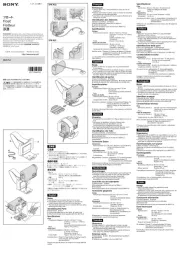
16 September 2025
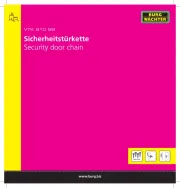
16 September 2025
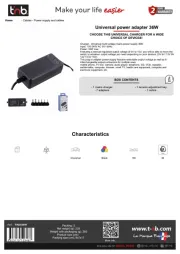
16 September 2025

16 September 2025
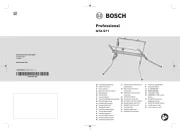
16 September 2025
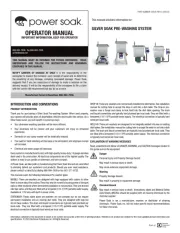
16 September 2025
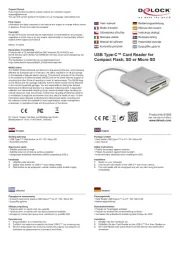
16 September 2025
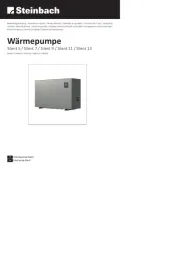
16 September 2025

16 September 2025
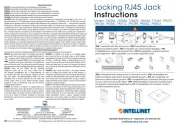
16 September 2025
